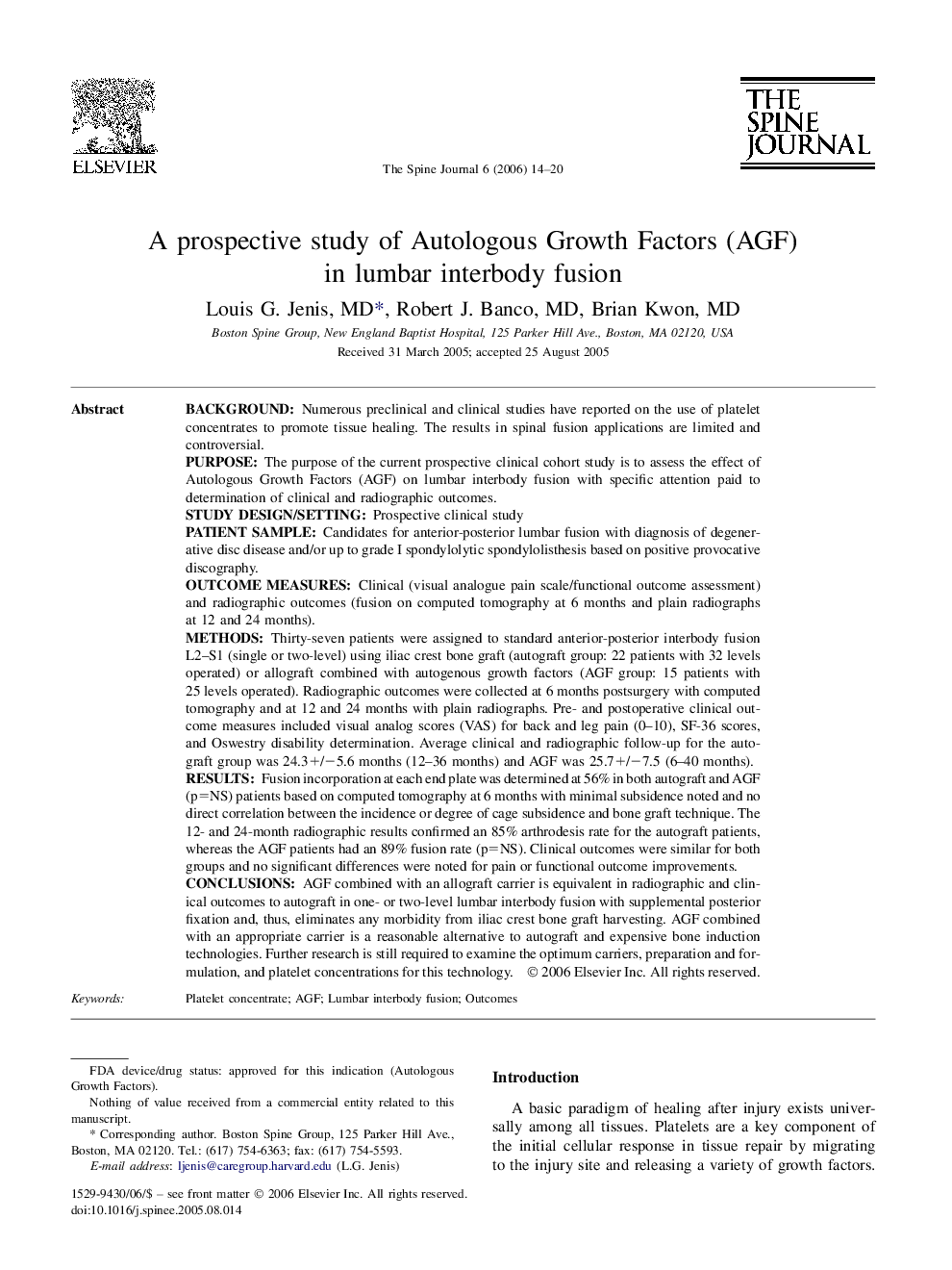| کد مقاله | کد نشریه | سال انتشار | مقاله انگلیسی | نسخه تمام متن |
|---|---|---|---|---|
| 4100474 | 1268690 | 2006 | 7 صفحه PDF | دانلود رایگان |

BackgroundNumerous preclinical and clinical studies have reported on the use of platelet concentrates to promote tissue healing. The results in spinal fusion applications are limited and controversial.PurposeThe purpose of the current prospective clinical cohort study is to assess the effect of Autologous Growth Factors (AGF) on lumbar interbody fusion with specific attention paid to determination of clinical and radiographic outcomes.Study design/settingProspective clinical studyPatient sampleCandidates for anterior-posterior lumbar fusion with diagnosis of degenerative disc disease and/or up to grade I spondylolytic spondylolisthesis based on positive provocative discography.Outcome measuresClinical (visual analogue pain scale/functional outcome assessment) and radiographic outcomes (fusion on computed tomography at 6 months and plain radiographs at 12 and 24 months).MethodsThirty-seven patients were assigned to standard anterior-posterior interbody fusion L2–S1 (single or two-level) using iliac crest bone graft (autograft group: 22 patients with 32 levels operated) or allograft combined with autogenous growth factors (AGF group: 15 patients with 25 levels operated). Radiographic outcomes were collected at 6 months postsurgery with computed tomography and at 12 and 24 months with plain radiographs. Pre- and postoperative clinical outcome measures included visual analog scores (VAS) for back and leg pain (0–10), SF-36 scores, and Oswestry disability determination. Average clinical and radiographic follow-up for the autograft group was 24.3+/−5.6 months (12–36 months) and AGF was 25.7+/−7.5 (6–40 months).ResultsFusion incorporation at each end plate was determined at 56% in both autograft and AGF (p=NS) patients based on computed tomography at 6 months with minimal subsidence noted and no direct correlation between the incidence or degree of cage subsidence and bone graft technique. The 12- and 24-month radiographic results confirmed an 85% arthrodesis rate for the autograft patients, whereas the AGF patients had an 89% fusion rate (p=NS). Clinical outcomes were similar for both groups and no significant differences were noted for pain or functional outcome improvements.ConclusionsAGF combined with an allograft carrier is equivalent in radiographic and clinical outcomes to autograft in one- or two-level lumbar interbody fusion with supplemental posterior fixation and, thus, eliminates any morbidity from iliac crest bone graft harvesting. AGF combined with an appropriate carrier is a reasonable alternative to autograft and expensive bone induction technologies. Further research is still required to examine the optimum carriers, preparation and formulation, and platelet concentrations for this technology.
Journal: The Spine Journal - Volume 6, Issue 1, January–February 2006, Pages 14–20